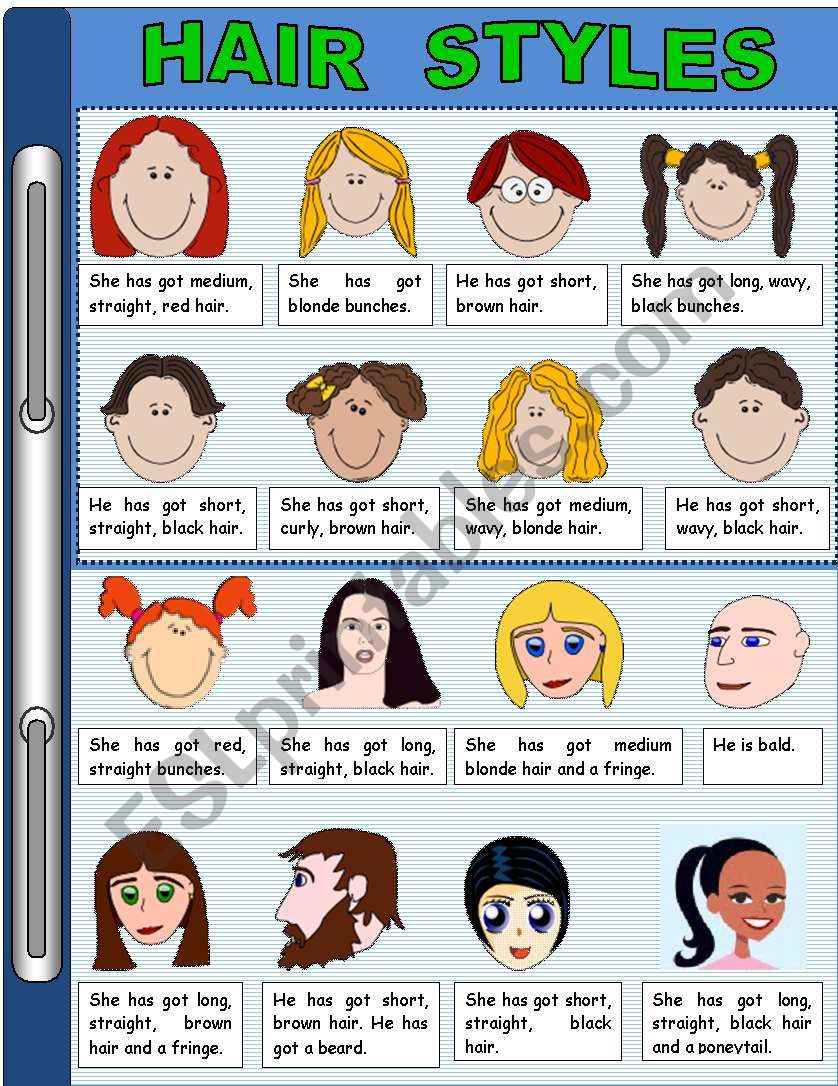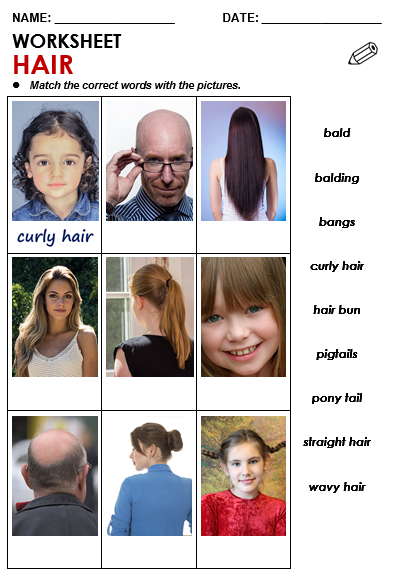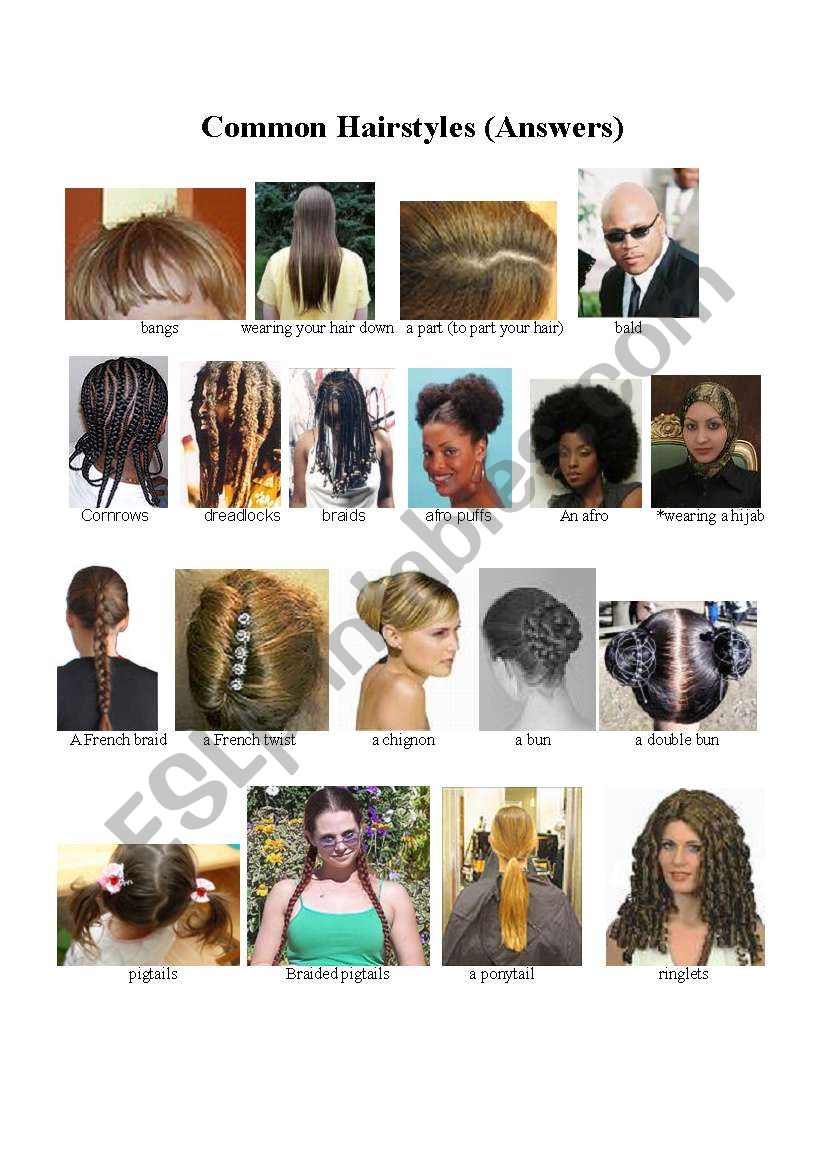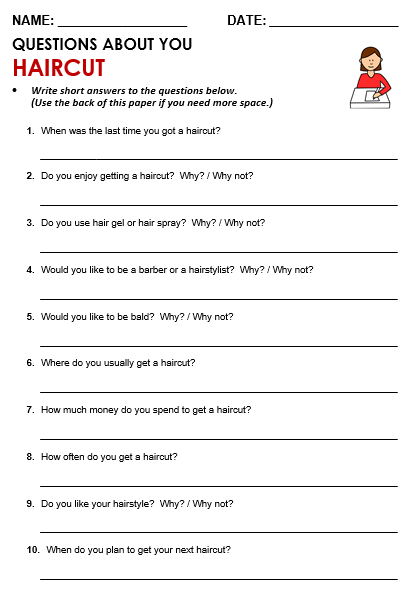
In the dynamic world of English as a Second Language (ESL) instruction, finding engaging and universally relatable topics for conversation practice is paramount. While traditional subjects like hobbies, travel, or food are valuable, sometimes the most ordinary aspects of daily life can unlock a rich tapestry of vocabulary, cultural insights, and personal expression. One such surprisingly fertile ground for discussion is hairstyles. From the practicalities of a daily routine to the profound cultural symbolism embedded in a particular cut or style, hairstyles offer a low-stakes, high-engagement entry point for ESL learners at all levels. This article will delve into the pedagogical benefits of using hairstyles as a conversation topic and provide a comprehensive array of questions designed to spark lively and meaningful discussions in the ESL classroom.
Why Hairstyles? The Pedagogical Benefits
At first glance, hairstyles might seem like a trivial subject. However, their ubiquity and personal nature make them an ideal conversation starter for several reasons:
- Universal Relatability: Everyone has hair, or at least an opinion on hair. This shared human experience immediately lowers the barrier to participation, as students don’t need specialized knowledge to contribute. Whether discussing their own hair, a friend’s, or a celebrity’s, there’s always something to talk about.
- Rich Vocabulary Expansion: Hairstyles are a goldmine for vocabulary. Beyond basic terms like "long," "short," "curly," and "straight," students can learn specific nouns (braid, bun, fringe/bangs, dreadlocks, ponytail, fade, bob, perm), verbs (cut, dye, style, wash, brush, comb, straighten, curl), adjectives (wavy, messy, neat, sleek, spiky, thinning, thick, fine), and phrases (bad hair day, split ends, hair extensions, hair products). This allows for a natural and contextualized acquisition of new words.
- Cultural Insights: Hairstyles are deeply intertwined with culture, history, and social norms. Discussing them can open doors to understanding different beauty standards, traditional practices, historical trends, and even the symbolism of certain styles within various societies. This fosters cross-cultural awareness and appreciation.
- Personal Connection and Expression: Talking about one’s own hair, past hairstyles, or desired looks encourages self-expression and allows students to share personal anecdotes. This personal investment makes the conversation more authentic and memorable, building confidence in speaking about oneself.
- Grammar Practice in Context: The topic naturally lends itself to practicing various grammatical structures. Students can use the past tense to describe previous hairstyles ("I used to have very long hair"), the present perfect for ongoing experiences ("I’ve never dyed my hair"), comparatives and superlatives ("This is the shortest my hair has ever been"), and future tenses for plans ("I’m thinking of getting a new haircut next month").
- Low-Stress Environment: Unlike more controversial or academic topics, discussing hairstyles is generally light-hearted and non-threatening. This relaxed atmosphere reduces anxiety and encourages even shy students to participate, knowing there’s no "right" or "wrong" answer.
Categories of ESL Conversation Questions About Hairstyles
To facilitate a comprehensive discussion, questions can be categorized to target different aspects of the topic, from personal experiences to cultural observations and hypothetical scenarios.
I. Personal Experiences and Preferences
These questions encourage students to talk about their own hair and its history, allowing for self-expression and the use of descriptive language.
- What’s your current hairstyle? Can you describe it in detail?
- How often do you get your hair cut? Who cuts it (a professional stylist, a family member, yourself)?
- Have you ever dyed your hair? What color was it? Would you do it again?
- What’s the shortest your hair has ever been? What about the longest?
- What’s your favorite hairstyle you’ve ever had? Why did you like it so much?
- Is there a hairstyle you would never try? Why not?
- Do you prefer long or short hair on yourself? Why?
- How much time do you spend on your hair each day? What’s your daily hair routine?
- What hair products do you use regularly (shampoo, conditioner, gel, spray, oil)?
- Do you follow hair trends? Have you ever tried a trendy hairstyle that you later regretted?
- What’s the most expensive haircut or hair treatment you’ve ever had? Was it worth it?
- Do you think your hairstyle reflects your personality? How so?
- What’s your biggest hair challenge or "bad hair day" scenario?
- If you could change one thing about your hair, what would it be?
II. Opinions and Observations
These questions prompt students to think critically about hairstyles in a broader social context, encouraging them to express opinions and make observations about others.
- What hairstyles are popular in your country right now, for men and for women?
- Do you think a person’s hairstyle affects their professional image? In what way?
- What’s a hairstyle you find very attractive? What about one you find unattractive?
- How do hairstyles differ between men and women in your culture? Are there any gender-neutral styles?
- Do you think people should be free to wear any hairstyle they want at work or school? Why or why not?
- What’s the most unusual or surprising hairstyle you’ve ever seen? Where did you see it?
- Do you believe that hairstyles can communicate something about a person’s age, social status, or lifestyle?
- How do hairstyles on TV or in movies influence real-life trends?
- Do you think it’s important for people to change their hairstyles regularly, or is it better to stick to one style?
III. Cultural and Historical Context
These questions delve into the cultural significance and historical evolution of hairstyles, fostering a deeper understanding of diverse traditions.
- Are there any traditional hairstyles in your culture? Can you describe them and what occasions they are worn for?
- What do certain hairstyles symbolize in your culture (e.g., status, marital status, mourning)?
- How did people style their hair in the past in your country (e.g., 1920s, 1960s, 1980s)?
- Are there any hairstyles associated with specific subcultures, religions, or historical periods in your country?
- Do celebrities or historical figures influence hairstyles in your country? Who are some examples?
- How have global trends influenced local hairstyles in your country?
- Are there any superstitions or beliefs related to hair or hairstyles in your culture?
IV. Hypothetical and Creative Scenarios
These questions encourage imaginative thinking and problem-solving, allowing students to use conditional language and express creative ideas.
- If you could have any hairstyle for just one day, what would it be and why?
- If you were a famous hairdresser, what would be your signature style or hair philosophy?
- Imagine you have to create a new hairstyle trend. What would it look like, and what would you call it?
- If your hair could talk, what do you think it would say about you?
- If you had to choose a hairstyle that best represents your personality, what would it be?
- If you were advising a friend on a new hairstyle, what factors would you tell them to consider?
- What would the world be like if everyone had the exact same hairstyle?
- If you could magically give someone a perfect hairstyle, who would it be and what style would you give them?
V. Problem-Solving and Advice
These questions prompt practical discussion and the sharing of advice, useful for developing conversational strategies like offering suggestions.
- What are common hair problems people face (e.g., frizz, dryness, oily hair, hair loss)?
- How do you deal with a "bad hair day"? Do you have any quick fixes?
- What advice would you give someone trying to grow out their hair?
- How do you choose a good hairdresser or salon? What qualities are important?
- What are the pros and cons of having very long hair? What about very short hair?
- If someone wanted to drastically change their hairstyle, what advice would you give them before they do it?
- What’s the best way to take care of different hair types (e.g., curly, straight, fine, thick)?
Tips for Teachers and Facilitators
To maximize the effectiveness of these questions, consider the following strategies:
- Pre-teach Vocabulary: Before starting the discussion, introduce key vocabulary words related to hairstyles. Use flashcards, pictures, or realia (e.g., hairbrushes, hair ties) to illustrate terms.
- Use Visual Aids: Show pictures of different hairstyles from magazines, online image searches, or even photos of celebrities. This helps visual learners and provides concrete examples for discussion.
- Model the Conversation: Start by answering a few questions yourself to demonstrate how to respond and to put students at ease.
- Pair and Group Work: Divide students into pairs or small groups to discuss the questions. This encourages more participation and allows students to practice speaking in a less intimidating setting.
- Follow-up Questions: Encourage deeper conversation by asking "Why?", "Can you give an example?", "Tell me more," or "What do you mean by that?"
- Differentiate: For lower-level students, focus on simpler questions and provide sentence starters. For advanced learners, encourage more complex descriptions, justifications, and nuanced opinions.
- Role-playing: Set up a "hair salon" role-play where one student is the stylist and the other is the client, discussing desired haircuts and styles.
- Surveys/Polls: Have students conduct a quick survey within the class about popular hairstyles or hair preferences, then report their findings.
- Error Correction: Decide on a strategy for error correction. For fluency practice, it might be best to note errors and address them later. For accuracy practice, gentle, immediate correction can be beneficial.
Conclusion
Hairstyles, far from being a superficial topic, offer a rich and accessible avenue for ESL conversation practice. They are universally relatable, brimming with opportunities for vocabulary acquisition, culturally insightful, and personally engaging. By utilizing a diverse range of questions, educators can transform a simple discussion about hair into a dynamic learning experience that builds confidence, expands linguistic proficiency, and fosters cross-cultural understanding. So, next time you’re looking for a fresh and effective conversation topic, remember that a journey into the world of hairstyles can be surprisingly enlightening and immensely beneficial for your ESL learners.






